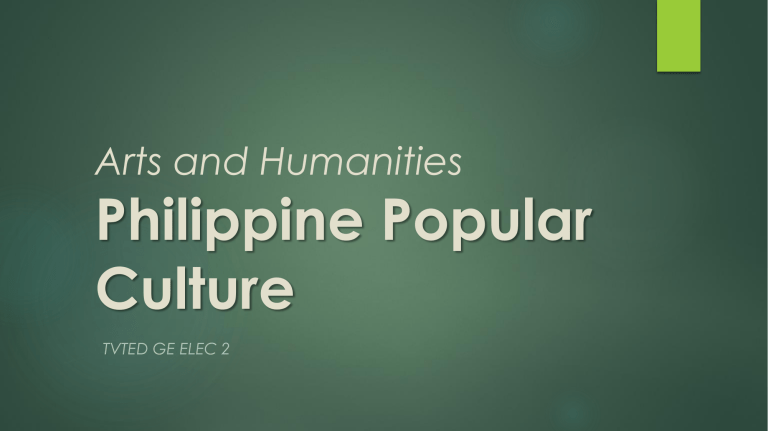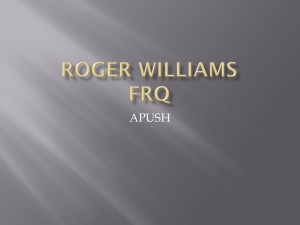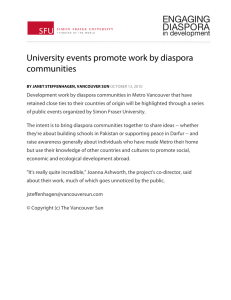Philippine Popular Culture: Definitions & Perspectives
advertisement

Arts and Humanities Philippine Popular Culture TVTED GE ELEC 2 Perspective in Philippine Popular Culture: Nature and Definitions of Popular Culture Definition of “Culture” Culture is the patterns of learned and shared behavior and beliefs of a particular social, ethnic or age group. It can be also defined as all the ways of life including arts, beliefs and institutions of a population. Definition of “Popular” Popular describes something that is wellliked or admired by a lot of people. It comes for a Latin word “populous”, which means people. Anything people. that is popular is liked by many What is Popular Culture? Popular Culture is the set of practices, beliefs, and objects that are dominant or prevalent in a society. It embody the most broadly shared meanings of a social system. What is Mass Culture? Mass Culture refers to a culture that is widely spread through the mainstream media. In today’s society this means platforms such as Facebook, Twitter, National Radio and National Television Folk Culture Hearth (home-based) is anonymous and can have multiple starting point. Spread through relocation diffusion The culture of rural people whose lifestyle is less influenced by modern technology, they adhere to “old fashion” ways. The Amish and Hutterites have retained Example: Amish and Hutterites traditional methods. They live on single family dairy farms and rely on horses for fieldwork and transportation. Over the course of 140 years, their population living in community of goods recovered from about 400 to around 50,000 at present. Today, almost all Hutterites live in Western Canada and the upper Great Plains of the United States. Indigenous Culture Community of people having a historical continuity with pre- invasion and pre- colonial societies that developed in their territories. For example, families are connected to the land through the kinship system, and this connection to land comes with specific roles and responsibilities which are enshrined in the law and observed through ceremony. Indigenous Peoples help protect our environment, fight climate change, and build resilience to natural disasters. Multiculturalism Characterized by people of different races, ethnicities, and nationalities living together in the same community. In multicultural communities, people retain, pass down, celebrate, and share their unique cultural ways of life, languages, art, traditions, and behaviors. Multicultural individuals — such as Chinese-Canadians, Turkish-Germans, or Arab-Americans — commonly think, perceive, behave, and respond to global workplace issues in more complex ways than monocultural individuals. Uniculturalism A core cultural identity that is inclusive but centered on a national ethos shaped by the history, customs, values of the majority. The assimilation of all people in a society into the dominant culture thus minimizing the dividing factors of race, ethnicity, and religion, by creating a strong national identity. Cultural Preservation Cultural preservation include documenting and studying languages; preserving and restoring historic relics significant to a culture or heritage; and encouraging the preservation and use of indigenous or tribal languages and rituals. Cultural heritage is central to protecting our sense of who we are. It gives us an irrefutable connection to the past – to certain social values, beliefs, customs and traditions, that allows us to identify ourselves with others and deepen our sense of unity, belonging and national pride. Cultural Promotion The dissemination of cultural and artistic products for the purpose of preserving the heritage of the past. Persuasive promotion Focus on offering quality Offer packages with a wide variety of cultural activities Develop itineraries with a special cultural theme Attend or organize major events Use of social media platforms Fusion and Diffusion of Cultures Cultural diffusion is the spread of the beliefs and social activities of one culture to different ethnicities, religions, nationalities, etc. 1. An example of cultural diffusion is the tradition of the German Christmas pickle ornament becoming popular in the United States. 2. The spread of music throughout the world also illustrates cultural diffusion. Cultural fusion is a phenomenon which emerges when two or more cultures inter-mingle and produce a new culture. 1. An example is blending of culinary traditions of two or more nations to create innovative and sometimes quite interesting dishes. (Japanese- Western Cuisine) Diaspora & Exile Culture The dispersion of people from their homeland or a community formed by people who have exited or been removed from their homeland. -An example of a diaspora is the 6th century exile of Jews from outside Israel to Babylon. Jewish Diaspora The Jewish diaspora is the dispersion of Israelites or Jews out of their ancestral homeland (the Land of Israel) and their subsequent settlement in other parts of the globe. In terms of the Hebrew Bible, the term "Exile" denotes the fate of the Israelites who were taken into exile from the Kingdom of Israel during the 8th century BCE, and the Judahites from the Kingdom of Judah who were taken into exile during the 6th century BCE. Jews have been forced to flee from their homelands into galut, or exile, creating distinct and prominent communities in Babylonia, Germany, and Iberia. Diaspora, or dispersion, created Jewish communities such as the Ashkenazi (German) and Sephardic (Iberian) communities. Thank you!



